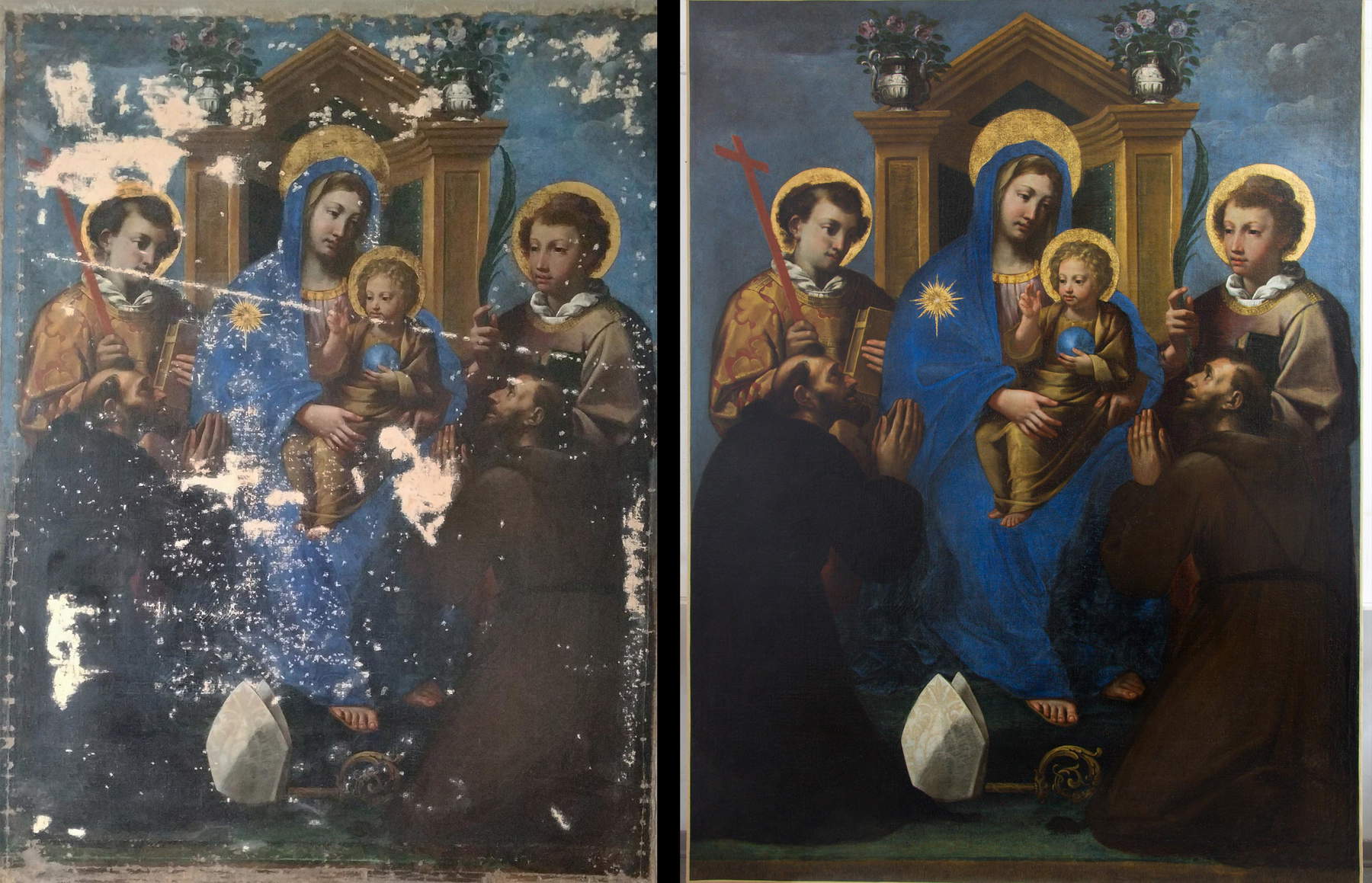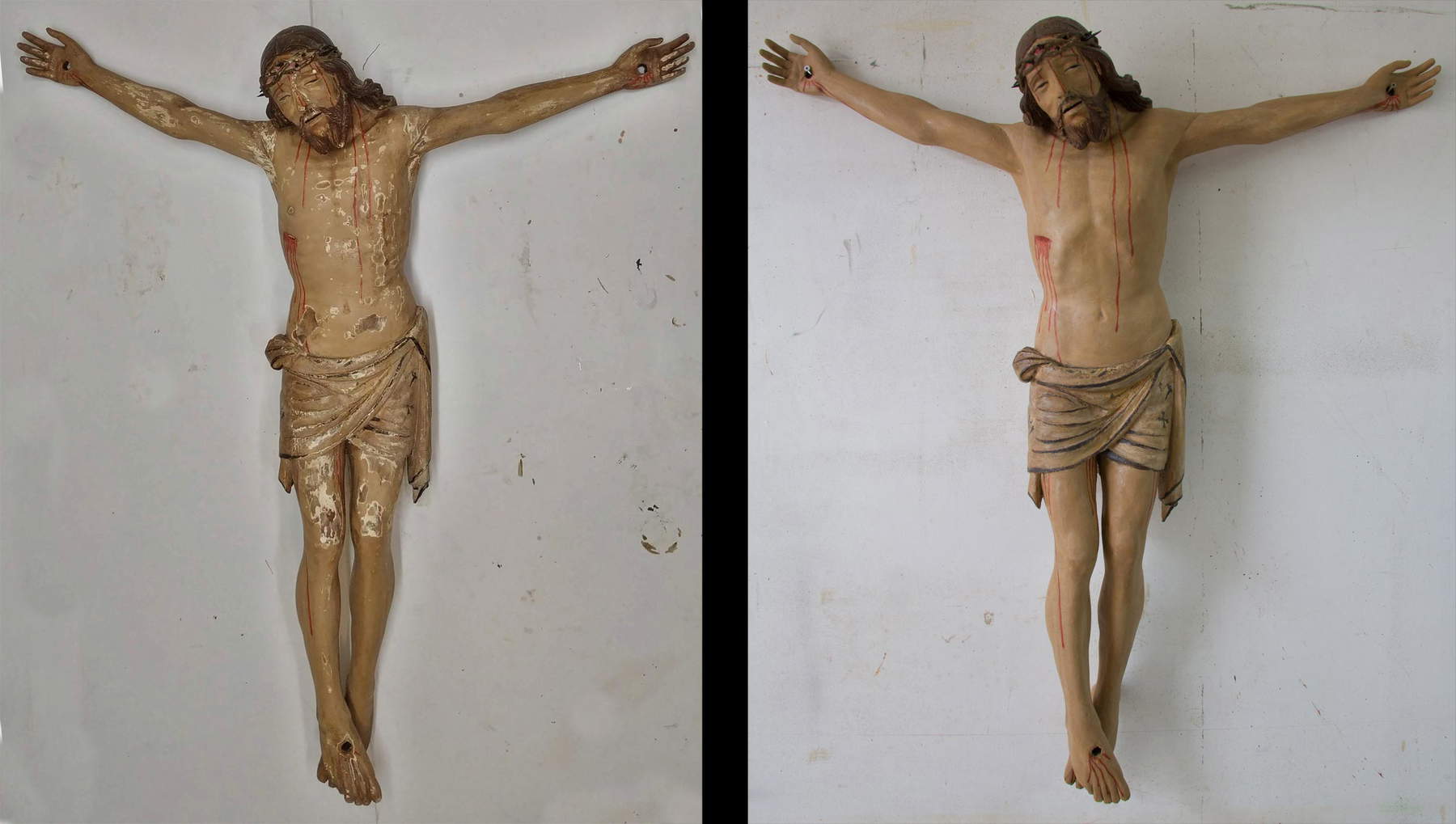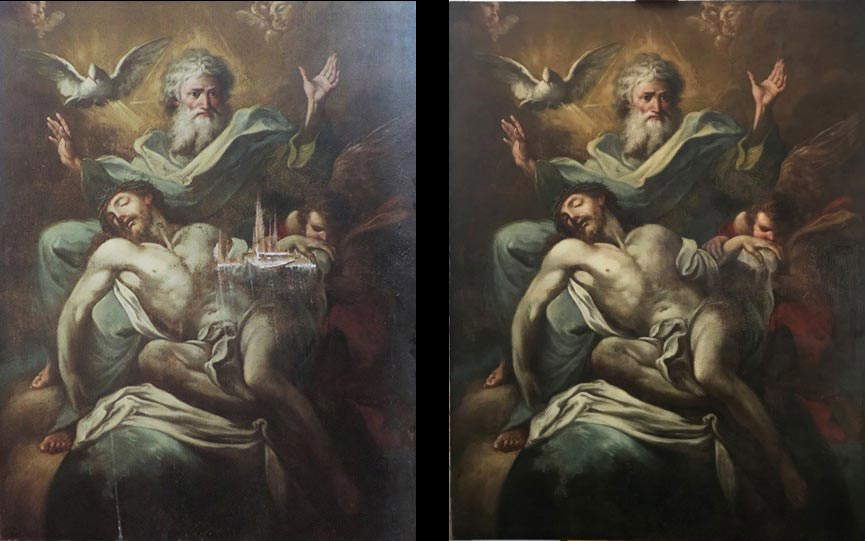Five works rescued from the 2016 and 2017 earthquakes and recovered thanks to restorations funded by Italia Nostra: it was January 19, 2018 when the association decided to allocate 50 thousand euros from the “Lascito Monti” in Milan to intervene on the works from Marche, Umbria and Campania and damaged during the seismic events that had hit the regions between 2016 and 2017. “A drop in the ocean of needs,” the association declares, “which Italia Nostra nevertheless wants to account for to its members and the entire public, to testify to the great commitment of state, local and ecclesiastical institutions to the recovery of the cultural heritage after the seismic events.” The restorations will be presented on March 18 at 5:30 p.m. in a live webinar on Italia Nostra’s YouTube channel.
The four restored works are an early 19th-century Christ with Trinity from the church of Santa Maria Maddalena in Casamicciola Terme (Naples), which was damaged during the Aug. 21, 2017 earthquake that shook the town on the island of Ischia; the polychrome wooden Crucifix, circa 1515, attributed to Domenico Indivini known as Domenico da San Severino, and a 17th-century St. Jerome from the church of San Benedetto in Cessapalombo (Macerata); the 16th-century Madonna and Child with Saints from the church of Santa Maria delle Grazie in Camerino; and a St. Crispino and St. Crispinian from the church of San Giovanni in Norcia. The work in Casamicciola was restored by Annalisa Pilato, those in Cessapalombo and Camerino by Moreno Angelani, and the one in Norcia by Emanuela D’Abbraccio.
The interventions of the works from the two towns in the Macerata area are particularly delicate. The Madonna Enthroned with Saints from Camerino (a 16th-century oil-on-canvas painting, measuring 176 cm x 13 1cm and by an unknown artist, depicting the enthroned Madonna and Child Jesus in her arms with the celestial orb in her hand and two young saints, probably the brothers Saints Cosmas and Damian bearing in their hands the consonant attributes such as palm of martyrdom, cross and book) was first subjected to diagnostic investigations, thanks to the collaboration of A.R.T. & Co (Spin-off of the University of Camerino), which allowed for a better assessment of the state of conservation and study of the technique of execution. The painting arrived at the laboratory in a poor state of preservation, as it had undergone multiple rehashes over time. The non-original frame covered the edges of the canvas that were folded and nailed together with the frame, so the canvas was not properly tensioned on the frame. The canvas was severely depolymerized with the presence of numerous cuts and poorly executed patches: these issues affected the adhesion and cohesion of the paint film. Restoration work consisted of removal of the non-original frame; mechanical cleaning of the inconsistent deposits on the front and back; glazing of the painted surface; removal of the painting from the old frame; lining with paste glue; mounting of the painting on a new extensible frame; removal of the glazing; cleaning of the painted surface; filling of the gaps and pictorial integration with watercolor and varnish colors using a concealed technique and color selection; and final varnishing.
The St. Jerome of Cessapalombo (17th-century oil painting on canvas, measuring 193 cm x 145 cm, and by an unknown artist, depicting St. Jerome outside the Grotto, in the act of writing the book inspired by divine light, with the typical attributes: crucifix, skull and lion) was investigated, again in collaboration with A.R.T. & Co, through investigations that revealed the presence of a consistent and oxidized layer of paint and non-original but circumscribed pictorial reintegrations. The nonoriginal frame had been improperly nailed onto the pictorial film, and the heavily oxidized state of the final varnish had altered the chromatic reading of the painting, hiding the presence of the cave and vegetation. Finally, the pictorial additions of the previous restoration were not in keeping with the painting’s color scheme, especially in the upper right corner near the rays of divine light illuminating St. Jerome. The restoration work consisted of mechanical cleaning of the incoherent deposits and of the painted surface with solvents, filling of the gaps and pictorial integration with watercolor and varnish colors using a concealed technique and color selection, and finally final varnishing.
Finally, as for the wooden Crucifix (size 110 cm x 90 cm), at a first macroscopic analysis the state of preservation was good with the exception of the horizontal clean cut all along the neck and hair whereby the head was completely detached from the rest of the body. Once cleaning began, it was found that the body had been completely repainted and the original pictorial material showed a rather unusual wide-mesh crack and thickness suggesting not particularly accurate workmanship. The restoration consisted of consolidation and restoration of the wooden structure; cleaning of the paint film with solvents; filling of the gaps in the paint film and preparation with plaster and glue; reinstatement of the chromatic surface in the abraded and lacunose parts, using watercolor and varnish colors; and final protection of the surface.
 |
| The Madonna and Child of Camerino before and after restoration |
 |
| The Crucifix of Cessapalombo |
 |
| The Christ with Trinity of Casamicciola Terme |
 |
| Works saved from earthquakes: here are the results of restorations funded by Italia Nostra |
Warning: the translation into English of the original Italian article was created using automatic tools. We undertake to review all articles, but we do not guarantee the total absence of inaccuracies in the translation due to the program. You can find the original by clicking on the ITA button. If you find any mistake,please contact us.